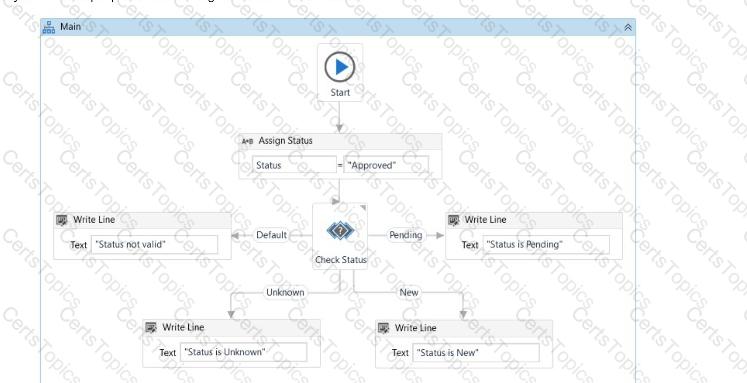UiPath Related Exams
UiPath-SAIv1 Exam







What information should be filled in when adding an entity label for the OOB (Out Of the Box) labeling template?
Which UiPath Communications Mining label category is often mapped to a service catalogue?
What will be displayed in the Output panel after running the workflow below?
